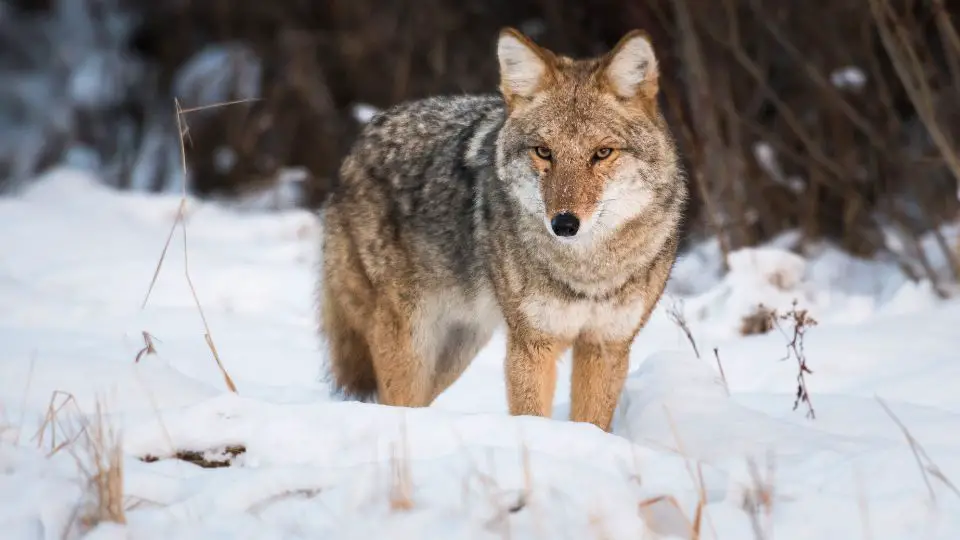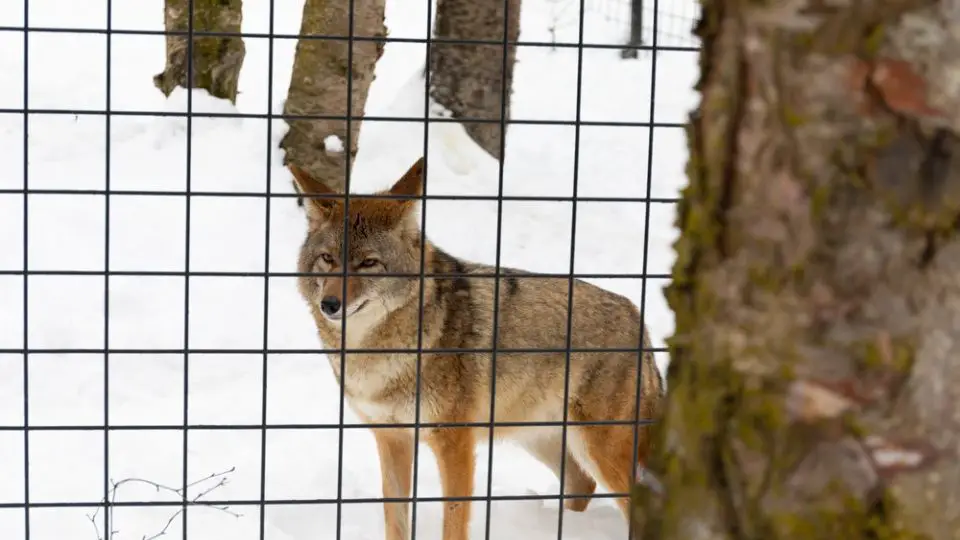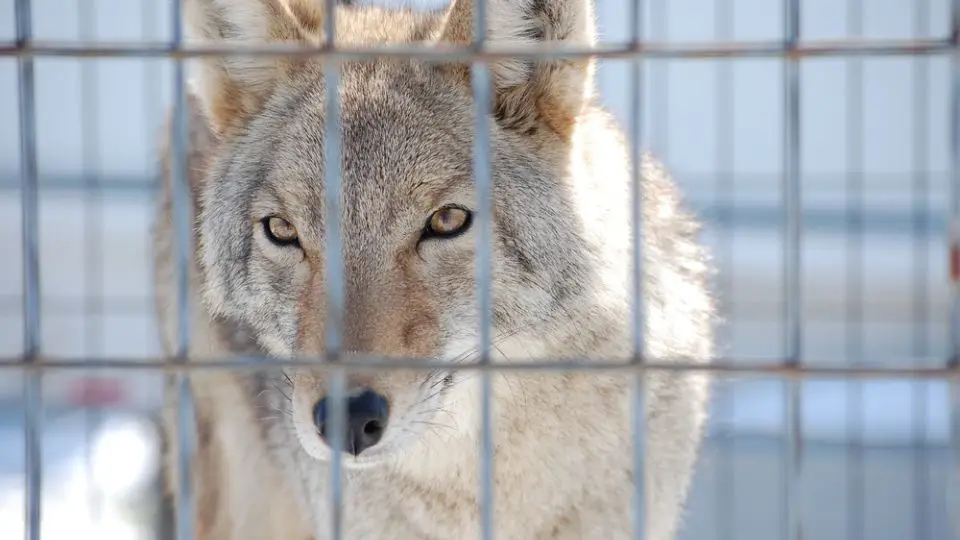The best coyote traps are coil spring foothold traps and snare traps. If you catch other animals, consider using less pungent bait. Unstable coyote traps can also be fixed by bedding your trap. If no coyotes arrive, consider relocating the trap set somewhere with a more favorable wind direction.
Waiting to ambush and shoot a coyote can be effective, but with manufacturers constantly improving on coyote trap designs, coyote traps are edging out as the supreme coyote exterminator. In this article, we’ll be discussing how to trap a coyote, some of the best coyote traps, and common mistakes made while trapping coyotes.
Table of Contents
The Best Traps to Catch Coyotes
When catching a coyote, a No. 3 coil-spring trap with a 6-inch offset jaw spread is ideal. This size is ideal for coyotes without also catching smaller animals like a raccoon or bobcat.
A lesser-used alternative to coil-spring traps is a snare trap set, which utilizes a wire loop to catch an animal by the neck. Here’s more information about these traps in-depth.
Coil Spring Foothold Traps
Foothold traps work by latching onto the animal’s foot as it steps on the trigger plate, keeping it in place as it triggers. There are two main renditions of this trap: Flat sets and dirtholes.
A dirthole trap is placed underground and intended to appear like an animal’s digging. When an animal steps on the actual trigger, the trap snaps shut, catching the animal by the foot. A flat set stays above the soil, usually disguised with leaves and dried grass.
Just like the dirthole set, a base plate and swivel provide stability to the coyote when the trap is triggered. When an animal activates the trigger, the trap snaps closed around its foot. Coyote urine and gland lures may be used to attract the animal to the trap.
Snare Traps
Snare traps work by latching onto an animal’s neck as it passes through, choking it as it thrashes about. These traps are easy to set and affordable, making them good options for trapping one or two coyotes.
The downside of this build is that they’re only one use. This is because the wire will permanently bend out of shape once a coyote’s been caught, preventing its reuse.

Do Coyote Traps Work?
The general consensus is that both foothold traps and snare traps are effective. Depending on the type of trap you opt for, you can secure a quick and easy kill thanks to these devices.
There are also non-lethal foothold traps, which simply grip the foot of the creature in a painless fashion. These traps are also effective.
The only type of trap that’s hard to defend are metal cage traps. Coyotes are clever creatures and won’t enter a cage trap unless the bait inside is particularly enticing.
Do Coyote Traps Hurt the Coyote?
Steel-jaw foothold traps, snares, and Conibear traps cause injury and pain to the trapped creature. Old and rusty traps that may have been advertised as non-lethal may also develop faulty mechanisms that could injure the coyote.
If you happen to catch a coyote, it’s best to dispatch the animal as soon as possible to minimize its suffering. You can also try to search for padded traps so that these animals will have less risk of injury.
How Do You Bait a Coyote?
There are a variety of effective coyote-baiting methods. Most hunters use a commercial product called a coyote gland lure. It’s a specifically-designed scent to attract coyotes and make them curious enough to investigate the source.
The baiting process itself is simple. You’ll want to place the lure or bait onto the trap’s trigger plate and the vicinity around it. A sifter can be used to prevent rocks from falling into the trap. Once you’ve done that, you can cover the trap with leaves or grass so it blends in with its surroundings.
You can use multiple baits, from commercial scents to parts of game carcasses. Ensure the trap is firmly entrenched on the ground to prevent unwanted movement.
How Often Should You Bait a Coyote Trap?
Bait your traps once a week. Too much bait will render the trap ineffective, as coyotes will suspect it to be fishy. You just have to wait patiently, use the best bait, and ensure that your trap is well-concealed.
Where Do You Put Coyote Traps?
First, locate the coyotes’ resting grounds or places they usually frequent. Higher coyote foot traffic means a higher chance of trap activity.
Then, the location should also meet the following criteria as much as possible:
- In an open field from your point of view.
- Has wind that blows the bait’s scent into the coyote’s grounds
- Enough brush for coyotes to feel secure in their approach
- A direct route from their nesting grounds to the bait
Position yourself 75 yards away from the bait, ideally at higher ground. This is to prevent the pack from picking up your scent if you’re aiming to shoot it down.

4 Common Mistakes to Avoid When Trapping Coyotes
No coyote anywhere near your coyote trapping kits? Here are four common trapping mistakes that amateur trappers may overlook.
Not using Wax Dirt
Coyote traps may freeze or get wet easily, which makes the trigger hard to set off. To avoid this, use some wax dirt on the trap’s coils and jaws. This will make it more durable against unfavorable weather conditions.
Tampering with the Set Too Much
You’ll want to attract coyotes into your trap, but making it look too elaborate may do the opposite effect. Use a natural amount of sticks, stones, and gravel to surround the trap. But, don’t use too much that it’ll set alarm bells ringing in their heads.
An Unsecured Trap
Coyotes are smart creatures, and they will try to steal the bait without setting off the trap. Anchor your trap with a rock, some logs, and some sticks. This can also actually double as a way to prevent other animals like opossums or a skunk from stealing the bait.
Unfavorable Wind Conditions
Canines have an uncanny ability to recognize odors in ways humans can’t even imagine. However, if the wind is blowing in the coyote’s direction, they might not be able to identify your scent. Place the trap perpendicular to the wind so that the bait can become a viable attractant.

